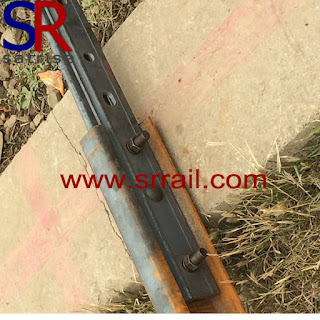 |
| The first railway fishplate, patented by William Adams and Robert Richardson in 1847 |
In steel rail terminology, a fishplate, splice bar or joint bar is a metal bar that is bolted to the ends of two rails to join them together in a track. The name is derived from fish, a wooden bar with a curved profile used to strengthen a ship's mast. The top and bottom edges are tapered inwards so the device wedges itself between the top and bottom of the rail when it is bolted into place. In rail transport modelling, a fishplate is often a small copper or nickel silver plate that slips onto both rails to provide the functions of maintaining alignment and electrical continuity.
 |
| Fishplate by Satrise Industry |
Email: admin@satrise.com
Tel: +86-17093757606
www.srrail.com
没有评论:
发表评论